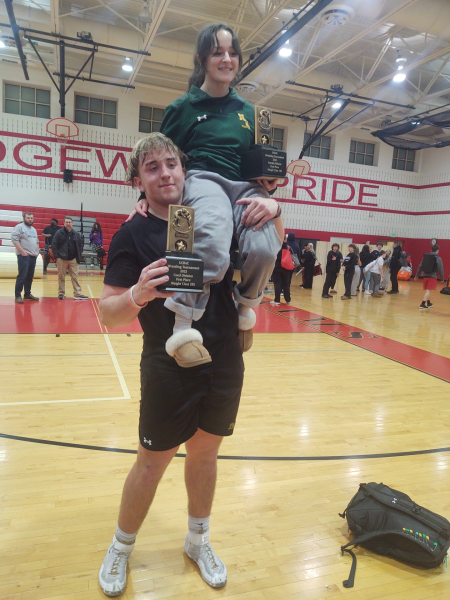Students take blow to head, schoolwork suffers
In a recent report run by the Marin Independent Journal, the number of athletes who receive concussions annually in the United States has mounted to 300,000. Every year, students involved in sports within Harford County Public Schools must take a concussion test before beginning the season.
Approximately 50,000 people die every year due to concussions, according to marinij.com. A teenager in Phoenix, New York, contributed to this statistic after receiving a blow to the head that stimulated blood flow to the brain, leading to his ultimate death.
16-year-old Ridge Barden collapsed during the third quarter of the game. His family members were completely caught by surprise.
“It’s still shocking. He was with us and now he’s gone,” mother Jacqueline Barden, told WSYR-TV.
The death of her son has amplified awareness of the dangers of head injuries.This year, lawmakers in New York approved a Concussion Management Awareness Act. Other schools across the nation have begun to enforce stricter rules proceeding any head injury.
North Harford requires football and soccer players to take a concussion test prior to the season. This test is later employed when players receive a blow to the head by comparing the original test to the test results after post-injury to determine whether the brain has concussed.
“Concussions affect our short-term memory, among other things,” said sophomore and JV football player Grant La Seta. “So we have the concussion test, of course, and all that padding in our helmets and mouth guards help prevent concussions.”
Some coaches have opted for concussion-prevention headbands that are known to lessen the probability of receiving a head injury after taking a blow to the head. North Harford’s soccer coaches have given players the option of wearing these headbands, but most decline. Junior and varsity soccer player Garrett Zdon recently was diagnosed with a concussion after another player’s shoulder crashed into his head, when he was not wearing a headband during a game.
“You have the choice not to wear it, most guys choose not to,” said Zdon. “This is my second concussion though, so I will probably have to wear my headband for a while, because after your third concussion, you can’t play high school sports, so I guess it’s better to be safe than sorry.”
Concussions also inhibit learning and inflict headaches. For high schoolers this can be detrimental to schoolwork, because they are unable to apply their best effort when their brain is concussed. Most schools allow several days off after the student has been supplied with a doctor’s note, followed by a period of several weeks when they are not supposed to take tests or quizzes.
“…Cognitive rest is a key to recovery. While restrictions on physical activity restrictions are also important, cognitive rest must be carefully adhered to, including limits on cognitive stressors such as academic activities…” stated sciencedaily.com.
However, in some cases, a couple of weeks is not a substantial period of time for the brain to heal and adjust post-concussion. Unfortunately, most students have to fight through it, because they do not want to fall behind in school and sports. Sometimes the return to school and other activity is postponed due to a specialized case when the brain is not on the right track to recovery.
“To date, there are no agreed upon formulas for return to learning. This is due largely to the fact that the return to school following concussion is an extremely individualized process…” stated nasponline. org. “The school psychologist and/or the school nurse are uniquely poised to facilitate the transition of a student with a concussion from the medical setting back to the educational setting.”











